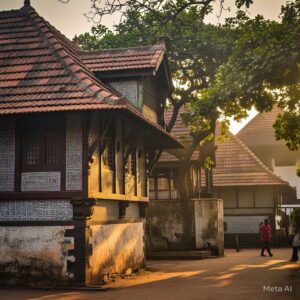Fort Kochi’s Portuguese Heritage Gets a Tech Makeover

Fort Kochi, located along Kerala’s picturesque coastline, is a captivating blend of historical charm and modern innovation. Its rich Portuguese heritage, evident in the area’s architecture and cultural landmarks, has long attracted visitors from around the world. Today, technological advancements are enhancing the preservation and presentation of this legacy, offering tourists enriched experiences while ensuring the area’s historical significance endures.
The Portuguese Influence in Fort Kochi
The early 16th century marked the arrival of the Portuguese in Kochi, initiating a significant cultural and architectural transformation. They established several key structures that continue to define Fort Kochi’s landscape:
-
Fort Emmanuel: Constructed in 1503, this fortification served as a strategic stronghold for the Portuguese, symbolizing their military and trade dominance in the region.
-
St. Francis Church: Built around the same time as Fort Emmanuel, this church is renowned as one of the oldest European churches in India, reflecting the Portuguese architectural style.
-
Indo-Portuguese Museum: This museum showcases artifacts highlighting the fusion of Indian and Portuguese cultures, offering insights into their intertwined histories.
These landmarks not only exemplify architectural prowess but also narrate tales of cultural confluence and historical evolution.
Technological Innovations in Heritage Preservation
Embracing modern technology has been pivotal in safeguarding and promoting Fort Kochi’s heritage.
-
Geotagging of Heritage Sites: The Greater Cochin Development Authority (GCDA), in collaboration with the Cochin Heritage Zone Conservation Society, has geotagged approximately 144 heritage sites in Fort Kochi and Mattancherry. This Geographic Information System (GIS)-based mapping allows visitors and researchers to access detailed information, including historical narratives and images, enhancing the exploration experience.
-
Heritage Mapping Website: Building upon the geotagging project, the GCDA launched a comprehensive website featuring over 200 historical sites. Each entry provides insights into the site’s history, photographs, and precise GIS coordinates, serving as a valuable resource for virtual tourists and history enthusiasts alike.
-
Interactive Digital Platforms: Organizations have developed immersive experiences that blend storytelling with technology, connecting people to the city’s past through curated tours and digital narratives.
Impact on Tourism
The integration of technology into heritage conservation has significantly enhanced Fort Kochi’s appeal:
-
Enhanced Visitor Engagement: Digital tools offer interactive and informative experiences, allowing tourists to delve deeper into the historical context of sites, thereby enriching their overall visit.
-
Increased Accessibility: Online platforms make Fort Kochi’s heritage accessible to a global audience, enabling virtual explorations and fostering broader interest in its cultural assets.
-
Sustainable Tourism Development: Digital archives and virtual tours help mitigate physical wear on heritage sites, promoting sustainable tourism practices that balance preservation with public interest.
Challenges and Considerations
Despite these advancements, certain challenges persist:
-
Digital Divide: Not all visitors may have access to or familiarity with digital tools, necessitating the maintenance of traditional informational resources alongside technological innovations.
-
Authenticity of Experience: While virtual experiences offer convenience, they may lack the sensory richness of physical visits, highlighting the need for a balanced approach that values both modalities.
-
Resource Allocation: Continuous updates and maintenance of digital platforms require sustained investment and expertise, posing logistical and financial considerations.
Future Prospects
Looking ahead, Fort Kochi’s fusion of heritage and technology holds promising avenues:
-
Virtual Reality (VR) Experiences: Developing VR simulations can provide immersive reconstructions of historical events and structures, offering educational and engaging experiences.
-
Augmented Reality (AR) Applications: Implementing AR can overlay historical information onto real-world views, enriching on-site visits with contextual narratives.
-
Collaborative Digital Platforms: Encouraging community contributions to digital archives can diversify narratives and foster a collective sense of ownership and preservation.
In conclusion, the harmonious blend of Fort Kochi’s Portuguese heritage with contemporary technological innovations has revitalized its cultural landscape. These efforts not only preserve the area’s rich history but also enhance its allure as a dynamic and educational tourist destination, ensuring that its legacy endures for future generations.
0 Comments